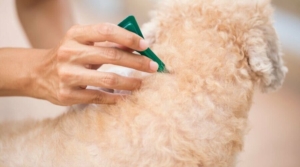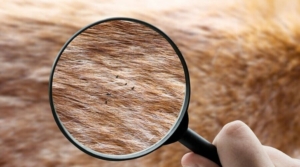How To Control Fleas
The Complete Guide to Eliminating Fleas
Dealing with a flea infestation can be extremely frustrating. These tiny pests can quickly take over your home and bite you, your family and your pets. The good news is that with the right techniques, you can get rid of fleas and prevent future infestations.
In this comprehensive guide, we will cover everything you need to know about flea control, from understanding the flea cycle to implementing integrated pest management techniques.
Read on to learn how to evict these uninvited guests from your home for good!
What Are Fleas?
Fleas are tiny, wingless, parasitic insects that feed on the blood of mammals and birds. The most common species that affect dogs and cats include:
- Cat flea (Ctenocephalides felis) – The most prevalent in the world, these fleas live on cats, dogs and sometimes humans. They are capable of jumping up to 16 inches high.
- Dog flea (Ctenocephalides canis) – As the name suggests, these fleas live primarily on dogs but will also bite humans and cats.
- Human flea (Pulex irritans) – Fleas prefer to feed on humans but can also infest dogs, cats, opossums, and raccoons. They are unlikely to live on a host
- Northern rat flea (Nosopsyllus fasciatus) – These fleas feed on rats and mice but will also bite humans and pets. They are known for transmitting plague.
Adults are about 1/16 to 1/8 inch long and reddish-brown in color. They are laterally flattened, which allows them to easily move through fur and hair. Fleas use their strong hind legs to jump incredible distances – they can jump up to 100 times their own body length! Also, they are known to transmit tapeworm larvae.
The Flea Life Cycle
In order to control an infestation, it’s important to understand the flea cycle:
- Eggs – Adults lay eggs on an animal host, which fall off carpets, bedding, and surroundings. A single flea can lay up to 50 eggs a day and over 2,000 eggs in its lifetime. Eggs hatch in 1–10 days.
- Larvae -Eggs hatch into larvae which feed on organic debris and flea excrement. The flea larvae avoid light and move deep into carpets, furniture or soil. The larval stage lasts 1-3 weeks.
- Pupae – Larvae spin a protective cocoon called a pupae. Pupae can survive for weeks to months until emerging when stimulated by vibration (a potential host).
- Adults – New adult emerge from pupae ready to find a host and begin the cycle again. Adult can live up to several days with a regular meal.
The cycle can be completed in as little as 2 weeks. Maintaining flea control involves interrupting this rapid reproductive cycle.
What Do Flea Bites on Humans Look Like?
Bites on humans often appear around the ankles or legs as small, red, raised bumps that can look like mosquito bites. Here are some ways to identify bites:
- They are very itchy, often with a burning sensation
- Bites occur in groups or clusters
- You may see a small red dot in the center of the bite
- The bites can become inflamed and swollen due to scratching
Some people suffer from allergic reactions to saliva resulting in swollen hives or rashes as well as fever and inflammation. See your doctor immediately if you have these symptoms.
Repeated scratching and infection of bites can lead to further skin problems like impetigo. Proper flea control is essential to prevent bites and secondary complications.
Non-Chemical Flea Control Methods
Before using chemical treatments, start with these non-toxic steps which can go a long way to reducing flea populations:
- Vacuum thoroughly – Use a hose attachment to suck up fleas, eggs, and larvae from carpets, furniture, pet bedding, and crevices. Remember to seal the bag and dispose of it outside.
- Wash pet bedding – Frequently wash your pet’s bedding and blankets in hot, soapy water to kill flea eggs and larvae.
- Groom pets outdoors – Use a flea comb to groom your pets outdoors to prevent bringing more fleas inside. Dispose of any collected fleas, eggs and excrement in a sealed container.
- Maintain landscaping – Keep grass cut short and shrubbery trimmed to expose fleas, larvae and pupae to heat and dryness.
- Use flea traps – Place flea traps with sticky pads or CO2 attractants around infested areas to catch fleas.
- Treat pets -A veterinarian can recommend safe products for your cats and dogs, like monthly spot-on treatments and flea collars. Treat all pets in the household.
- Clean thoroughly – Focus on pet areas in the home. Steam clean carpets and rugs and mop tile or wood floors. Wash pet bedding and blankets weekly.
Following non-chemical steps first gives chemical treatment the best chance of success.
Chemical Flea Treatments For Your Home
If non-toxic methods alone prove insufficient, chemical treatments can be used or a professional pest control company can be called to eradicate severe home infestations.
Flea Foggers/Bombs
Bombs or foggers release insecticides as a mist or vapor to penetrate carpets, furniture and pet resting areas. They kill adult fleas as well as larvae and eggs. Here’s how to use foggers effectively:
- Read all label directions carefully before use.
- Cover or remove exposed food, dishes and utensils.
- Turn off electronic equipment and cover with plastic.
- Remove pets, plants and fish tanks. people should also leave the home for a few hours after use.
- Close windows, doors and vents and turn off central air/heat.
- Apply foggers one per room, releasing near the center.
- Allow home to remain closed up for 12 hours afterwards.
- Return home and open windows and doors widely for at least 30 minutes before bringing pets back indoors.
Repeat application may be needed after 7-10 days to kill newly emerged fleas.
Flea Powders and Carpet Sprays
Powder can be applied to carpets, rugs, pet bedding, and furniture to kill fleas on contact. Spray is also effective for use in household carpeting and can penetrate deeper into carpet piles.
Follow instructions carefully and wear a dust mask and gloves when applying. Thoroughly clean treated areas after 1-2 weeks to remove dead fleas and reapply if needed.
Professional Exterminator
For severe, persistent problems, calling a professional exterminator may be needed. They have access to stronger insecticides that require special licenses and equipment to administer. Fumigation of the entire home may be required in some cases.
Professionals also know the best application methods to thoroughly treat the entire home, especially cracks and crevices where fleas may hide. This provides the highest level of flea elimination.
Outdoor Flea Management Solutions
Don’t neglect outdoor areas in your flea removal efforts. Here’s how to make your yard and garden less flea friendly:
- Treat areas pets frequent such as under porches and decks, in dog houses and around foundations. Apply sprays or sprinkle pesticides.
- Trim vegetation and remove brush piles and leaf litter where fleas thrive. Mow the lawn and rake up clippings.
- If fleas are really bad, have a professional treat the perimeter of your home and entire yard. They can apply stronger pesticides with power spray equipment.
- After spraying, go over treated areas with a rake or broom to evenly distribute insecticides.
- Reapply outdoor treatments every 2-3 weeks until fleas are under control since insecticides dissipate over time. Consistency is key!
A well-maintained yard and garden are less inviting to fleas. Starve them out outside and you’ll see fewer trying to sneak in!
Maintaining Flea-Free Living
Once you’ve successfully won the battle against fleas in your home, here are some tips to keep them away for good:
- Continue using veterinarian-recommended prevention on pets year-round. One untreated pet can reintroduce fleas!
- Vacuum rugs, carpets, and pet areas 1-2 times per week. Follow with carpet spray if needed.
- Inspect and treat pet beds regularly by washing or spraying. Discard old beds completely.
- Monitor yards and treat hotspots where fleas thrive monthly. Keep vegetation cut back.
- Employ professionals for follow-up treatments during peak seasons or if home remedies fail.
- Act immediately if it reappear; don’t wait for a full-blown infestation!
With proper diligence, it can be controlled, and your home will return to a peaceful, pest-free state for you and your pets!
FAQ’s
How can I treat flea bites on humans?
Bites can be treated by washing with soap and liquid. Apply an anti-itch ointment, such as hydrocortisone, or take antihistamines for swelling. See a doctor if severe swelling or a rash develops.
What kills fleas instantly?
There are no instant killers. Insecticide sprays, foggers, and powders work by making direct contact but may take days to fully interrupt the cycle. Be patient and persistent.
How do bombs work on fleas?
Bombs or foggers release insecticides as a mist to penetrate deep into soft furnishings, carpets, and pet areas in the home. They kill adult as well as larvae and eggs. One treatment may not be enough.
How do dogs get fleas?
Dogs can contract it through contact with infested environments, including grass, carpets, bedding, or another pet with parasites. Adult rapidly multiply by laying eggs, which then fall into the surroundings.
What natural ways prevent fleas?
Non-toxic prevention includes vacuuming, washing pet bedding, grooming outdoors, using traps, and maintaining your yard. However, natural methods may not be 100% effective in all cases.
Conclusion
Fleas can be very hard to get rid of. They multiply and spread fast in your home space and on your pets. It can feel like you will never win! But with smart steps, you can kick fleas out for good.
The key is to break the flea cycle so fleas cannot keep making more fleas. Clean a lot. Wash all pet beds and toys. Treat your pets. Use sprays or powders on carpets and furniture. Keep your yard clean and sprayed too. It takes work but is worth it to be flea-free!
Stay on top of it. Check for fleas often. Treat right away if you find any. It is easier to knock down a few fleas than a full infestation. Don’t let the little fleas win! You can get rid of fleas with a good plan. Take control and keep your home comfy for you and your pets.



